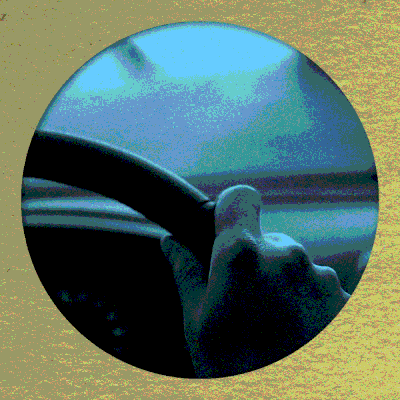
I don’t consider driving a necessity. For a long time, it wasn’t. I’d lived in places everyone told me I needed a car: Los Angeles, Palo Alto, upstate New York. But 95 percent of the time that people say you “need” a car, what they’re really saying is, “If you’re not a fan of four-hour layovers in Erie, Pennsylvania, you’d benefit from having a car.” You don’t need a car if you can rank the quality of every major cross-city bus line in the United States (Greyhound gets a bad rap, but it’s much nicer than Bonanza). You don’t need a car if you’re willing to wait 26 minutes for the metro in L.A.
I grew up in Manhattan, which explains why I never learned how to wield an automobile. I took driver’s ed in high school, but it was at the neighboring all-boys school, and I’d leave the lesson after ten minutes to seek out my boyfriend. He robbed me of my virginity and my young driving potential! My first time behind the wheel was on Madison Avenue. My second and third times were also on Madison Avenue, and my fourth time was at the road test in Staten Island. Suffice to say, I failed.
I took sporadic driving lessons in college, with two further stabs at the road test. I still didn’t need or want to drive, but I wanted to stop bringing my passport to bars. On my third try, at 21, I eked out a pass. Yes, I was in my friend’s dad’s Mercedes, and yes, I forgot to turn the car off afterward. But by that point, the instructor had already left the car and issued me my shining new temporary license. And that was the last time I drove for ten years.
Shortly after turning 31, as many of my friends started “settling down,” a confluence of factors urged me to revisit the driving question. A non-driving friend had bitten the bullet and learned in a matter of months, and I was envious. I was hearing more and more about cars’ new autonomous features (the risks of letting Elon Musk on Twitter), and I wondered if it might genuinely be easier than it once was. I started to think about becoming a mother. It wasn’t something I intended to do in the near future, but I sensed that shuttling kids around might be easier in a car, and I wanted to feel comfortable behind the wheel before then.
But none of these things actually got me in the driver’s seat. It was the prospect of learning a new skill. The joy of gaining mastery. That’s what changed for me — not simply what everyone around me was doing or a prerequisite to heading off to college. It was a new hobby.
Now, as hobbies go, it’s not the most wholesome. For starters, it kills people. Of course, it’s not the only hobby with that distinction (see: gun ownership), but it’s worth considering that I could have chosen to learn to knit. It’s also not great for the environment, and it’s woefully expensive. Nonetheless, I started — slowly.
One Monday, I called up a driving school near my sister’s house on Long Island and asked if I could schedule a lesson. When they asked how old I was, I whispered “31” into the phone, as though that might disqualify me. “Oh, so you’re an adult?” the lady asked. In a sense, yes.
When the first driving lesson went well, I booked a package of five. I hadn’t chosen driver’s ed in high school — my parents had signed me up. (As Manhattanites, they didn’t have their own car on which to teach me, but they didn’t want to rob me of a quintessential teenage experience.) And what teen actually wants to do anything that their parents signed them up for? When I was choosing to, as an adult, I better appreciated what the instructor had to offer. Each lesson felt like a tangible step forward; I first learned how to change lanes, then parallel park, then drive on the highway. I was developing a new skill.
A month after my first lesson, a friend convinced me to join her in Indiana for a week to practice driving on the open road. It did a world of good in building my confidence — I drove solo for the first time, from one cornfield to another, and then back. Actually, it might have just been one very long cornfield. Either way, I felt empowered. Once I’d mastered the basics, I no longer felt like I was just building a collection of skills. I was developing a new identity; I was a driver.
In the weeks after that, I leaped at any chance to drive. I took a friend to the beach; I did my sister’s grocery shopping; I paid a full day’s fee to rent a car for a one-hour drive. (I’d intended to use it the whole day but got tired. It’s hard!) All of which brought me to Vancouver Island — three months to the day after my first lesson — with a rental car that was all my own for a full week. I’d booked the trip months ago; I was going to a wedding in Alaska and wanted to take a vacation beforehand. I figured I would do what I always did when traveling alone: go wherever I could with public transit, but accept the fact that I’d miss out on a lot because of my driving limitations. However, in the two weeks before my trip, the germ of an idea grew in my mind. I Googled if driving in Canada was similar to driving in America (it is, they just honk less, and do it with a smile). I looked up how much it would cost to rent a car for the week. I checked what parts of the island were only accessible by car, and I came to believe I was missing out if I stayed on the bus. I asked myself if I was ready. If I’d mastered the new skill. I decided: This was to be my first driving trip.
I was filled with the rare feeling of taking a concrete step forward. Adulthood isn’t full of the same kinds of developmental milestones as childhood or adolescence; it’s easy to let years go by without feeling a change. But not with driving — it changed the way I moved around the world. It expanded my options. In that expansion, I found a new kind of freedom. I could go on a hike, and if I got bored, I could turn around five minutes in and go on a different hike without wasting an Uber ride. If I was passing a field of cows, I could park my car and get out and look at them (they look the same outside the car as they do from inside). If I got groceries, I could simply throw them in the back seat and forget about them for the rest of the afternoon. Sure, the rental car company fined me for the ice cream stains, but I was alive.
That thrill did come with anxiety. It was terrifying to know I was responsible for the car. I couldn’t just leave it somewhere. If I brought it with me, I had to get it home. But that’s part of the joy. There’s a time and place for activities that offer no stress whatsoever. Some days, I need to spend the afternoon lazing about on my couch. But there’s also a time and place for things that take concentration, that seed us with responsibility, that have real stakes. I have no choice but to concentrate on the road when I’m driving; the alternative is devastating. As a result, I’m not concentrating on whatever neuroses were plaguing me earlier that day. The trip was a success. I stopped every 45 minutes to take a series of deep breaths, but I banged out about 50 hours of driving, all by myself.
In my teens, I was learning new things all the time — that’s literally the job of a teenager. In my 30s, I’m able to more fully appreciate the joy in learning something, anything new. To get swept up in it, to appreciate the process. I’m home now, but I’m planning to take several trips to visit friends a few hours away this summer. That’s what I love about driving — it’s a hobby that always offers more opportunities to practice. In this case, navigating Manhattan traffic. Wish me luck.
More From This Series
- I Make Ceramics to Keep My Hands Busy
- I Need to Be a Wine Person
- Pole Dancing Helped Me Regain Control of My Life




